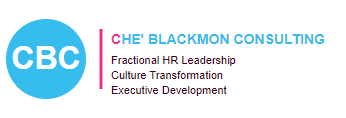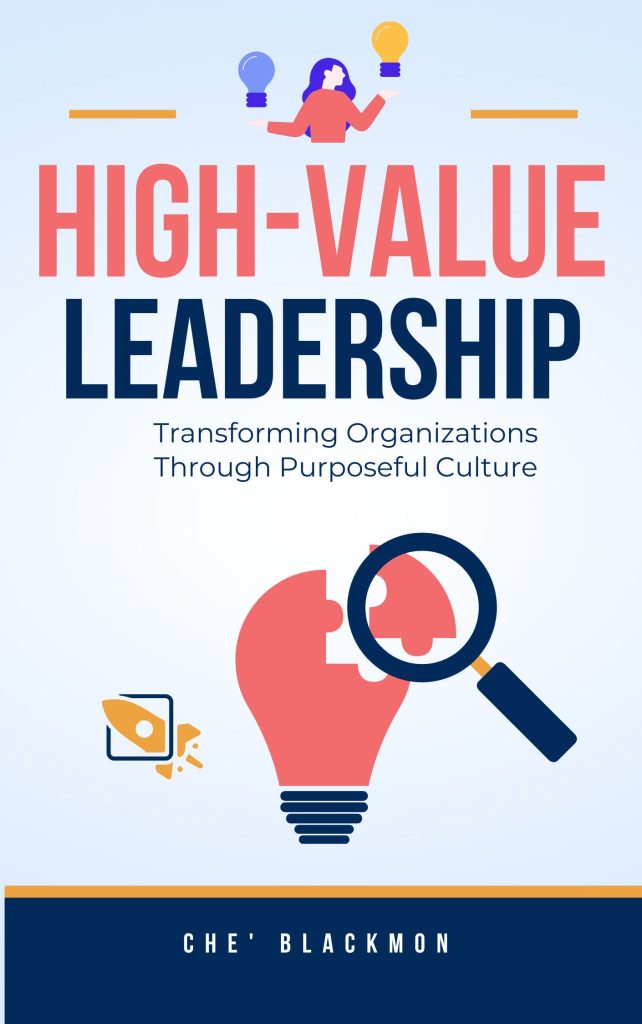Your cart is currently empty!
The Detroit Lions were professional football’s punchline for decades. A culture of losing had become so embedded in their DNA that failure seemed inevitable. Then something remarkable happened. Under Dan Campbell’s leadership, they didn’t just improve—they transformed entirely, becoming playoff contenders through a complete cultural revolution built on one word: GRIT.
This transformation offers profound lessons for every organization, particularly those seeking to create environments where traditionally overlooked talent can thrive.
Understanding the GRIT Framework
When Campbell took over in 2021, he didn’t start with new plays or roster changes. He started with culture. GRIT became more than a slogan—it became an operating system that filtered every decision, from draft picks to daily practices.
The GRIT framework encompasses:
- Guts: Courage to take calculated risks
- Resilience: Bouncing forward from setbacks
- Initiative: Taking ownership without being asked
- Toughness: Mental and emotional fortitude
But here’s what makes this remarkable: Campbell’s GRIT wasn’t about toxic masculinity or “tough it out” mentality. It was about creating psychological safety while maintaining high standards—a balance that many organizations struggle to achieve.
The Pre-Campbell Era: A Culture Case Study in Failure
Before Campbell’s arrival, the Lions exemplified how toxic culture becomes self-perpetuating:
- Learned Helplessness: Players expected to lose
- Blame Culture: Finger-pointing replaced accountability
- Individual Survival: Players focused on personal stats over team success
- Leadership Vacuum: No clear vision or values
- External Focus: Blaming refs, luck, or circumstances
The parallels to struggling organizations are striking. How many companies operate with these same cultural deficits, wondering why performance never improves despite changing strategies, systems, or personnel?
The Transformation Playbook
Campbell’s approach to cultural transformation provides a blueprint that any organization can follow:
1. Authentic Leadership from Day One
Campbell cried at his introductory press conference. In a sport that often punishes vulnerability, he showed emotion openly. This wasn’t weakness—it was revolutionary authenticity that signaled a new era.
For Black women in corporate spaces, this authenticity principle is crucial. As I discuss in “Rise & Thrive,” the pressure to code-switch and hide authentic selves creates exhaustion and limits potential. Campbell proved that leaders can be both authentic and effective.
2. Clear, Memorable Values
GRIT wasn’t corporate jargon. It was simple, memorable, and actionable. Every player, coach, and staff member could explain what it meant and how to live it.
Compare this to most corporate value statements—lengthy, generic, forgotten. High-value cultures need values that stick.
3. Aligned Systems and Processes
The Lions didn’t just talk GRIT—they operationalized it:
- Draft picks were evaluated for grit alongside talent
- Practice intensity increased to build mental toughness
- Play-calling became more aggressive, reflecting courage
- Player development focused on resilience-building
This alignment is what I emphasize in “High-Value Leadership.” Culture without systems is just wishful thinking.
4. Psychological Safety with Accountability
Campbell created an environment where:
- Players could fail without being destroyed
- Mistakes became learning opportunities
- Accountability was about growth, not punishment
- Success was collective, not individual
This balance is especially important for traditionally overlooked talent. Research shows that Black women often face harsher judgment for mistakes while receiving less credit for successes. GRIT culture levels this playing field by making resilience and learning the focus, not perfection.
The Sheila Ford Hamp Factor: Aligned Leadership
The transformation wasn’t just about Campbell. Owner Sheila Ford Hamp provided something crucial: patience and alignment. When the team started 0-10-1 in Campbell’s first season, she didn’t panic. She understood that cultural transformation takes time.
This owner-coach alignment created what I call in “Mastering a High-Value Company Culture” the “permission structure” for real change. Too often, organizations sabotage cultural transformation through impatience or mixed messages from leadership.
Brad Holmes, the General Manager, completed this alignment trinity. His draft philosophy perfectly matched Campbell’s culture, prioritizing character alongside talent. This meant passing on more talented players who didn’t fit the culture—a controversial decision that paid massive dividends.
The Leadership Trinity: When Alignment Creates Magic 🏆
The Lions’ transformation wasn’t just about Dan Campbell’s cultural revolution—it was a masterclass in aligned leadership between three key figures: Owner Sheila Ford Hamp, General Manager Brad Holmes, and Head Coach Dan Campbell. This trinity created what most organizations lack: complete philosophical and operational alignment from ownership through execution.
Sheila Ford Hamp: The Patient Visionary
When Hamp took over as principal owner in 2020, she made a crucial decision that would define the franchise’s future. She didn’t just want to win—she wanted to build something sustainable that Detroit could be proud of. Her “noble cause” wasn’t about quick fixes but about cultural transformation.
Most remarkably, when the team went 0-10-1 to start Campbell’s first season, she didn’t waver. “A rebuild is hard,” she acknowledged publicly, providing cover for her leadership team when critics called for heads to roll. This patience—rare in professional sports and even rarer in corporate America—gave Holmes and Campbell the runway needed for real transformation.
Brad Holmes: The Talent Architect
If Campbell rebuilt the culture, Brad Holmes architected the talent foundation that made it possible. His genius lies not just in identifying talent, but in recognizing the intersection of ability and character that creates championship teams.
Holmes revolutionized the Lions’ approach to talent acquisition through what he calls his “critical factors”:
- Smarts: Not just football IQ, but emotional and situational intelligence
- Toughness: Mental resilience over physical bravado
- Will: Internal drive that doesn’t require external motivation
- Relentlessness: Sustained effort through adversity
- Passion: Genuine love for the craft and team
- High Football Character: Reliability, work ethic, and team-first mentality
His 2021 draft—his first with the Lions—became the cornerstone of transformation:
- Penei Sewell: Elite talent with exceptional character
- Amon-Ra St. Brown: Overlooked by others but embodied every GRIT principle
- Alim McNeill: High character, high motor player others undervalued
Holmes’ approach mirrors what I discuss in “Mastering a High-Value Company Culture”—he doesn’t just fill positions; he builds culture through strategic talent selection. His ability to identify players who were overlooked by other teams because they didn’t fit traditional molds became the Lions’ competitive advantage.
The Three-Touch Welcome: Culture from Day One
Perhaps most tellingly, when the Lions draft a player, that player immediately hears from all three leaders—Hamp, Holmes, and Campbell. This isn’t corporate ceremony; it’s cultural immersion. The message is clear: you’re not just joining a team; you’re joining a aligned organization where ownership, management, and coaching share the same vision.
This three-pronged approach ensures:
- Consistent Messaging: No mixed signals about expectations or values
- Visible Unity: Players see leadership alignment immediately
- Cultural Priority: Character and culture matter from the top down
- Sustained Support: Players know the entire organization backs the vision
Brad Holmes and the Overlooked Talent Revolution
Holmes’ genius extends beyond traditional scouting—he’s revolutionized how the Lions identify and develop traditionally overlooked talent. His approach offers profound lessons for corporate talent acquisition:
Beyond the Obvious Metrics Holmes doesn’t just look at 40-yard dash times or bench press reps. He evaluates:
- How players respond to adversity
- Their growth trajectory versus current ability
- Leadership in losing situations
- Work ethic when no one’s watching
- Ability to elevate teammates
This mirrors what traditionally overlooked talent, especially Black women, bring to organizations—excellence that doesn’t always show up in traditional metrics.
The Amon-Ra St. Brown Principle St. Brown fell to the 4th round despite exceptional college production. Why? He didn’t fit the prototype—not the fastest, not the biggest. But Holmes saw what others missed: relentless work ethic, exceptional intelligence, and an internal drive that couldn’t be taught.
By year two, St. Brown was setting NFL records. This exemplifies Holmes’ ability to see potential where others see limitations—a crucial skill when identifying overlooked talent in any organization.
Cultural Fit Without Conformity Holmes’ interpretation of “cultural fit” differs from the corporate world’s often exclusionary definition. He seeks players who embody GRIT values while bringing diverse backgrounds, styles, and perspectives. The Lions’ locker room includes:
- Players from Power 5 schools and small colleges
- Different personality types united by shared values
- Various leadership styles all contributing to team success
- International players bringing global perspectives
The Multiplication Effect
When ownership, management, and coaching align, the impact multiplies:
Year 1 (2021): Foundation Building
- Hamp provides patience and resources
- Holmes drafts culture-carriers despite “reaching” for character
- Campbell installs GRIT culture
- Result: 3-13-1 record but foundational pieces in place
Year 2 (2022): Momentum Building
- Hamp maintains course despite criticism
- Holmes adds complementary talent (Jameson Williams, Aidan Hutchinson)
- Campbell’s culture takes root
- Result: 9-8 record, cultural transformation visible
Year 3 (2023): Breakthrough
- Hamp’s patience pays dividends
- Holmes’ draft picks become stars
- Campbell’s culture fully embedded
- Result: Division champions, playoff contenders
This progression shows what happens when leadership alignment allows cultural transformation to fully develop—something most organizations abandon too quickly.
Corporate Applications of the Trinity Model
For organizations seeking similar transformation:
The Owner/Board Role (Hamp Model)
- Provide patient capital for transformation
- Shield leadership from short-term pressures
- Communicate unwavering support publicly
- Define the “noble cause” beyond profits
The Talent Leader Role (Holmes Model)
- Redefine talent identification criteria
- Value character alongside competence
- Find overlooked talent through non-traditional metrics
- Build culture through every hire
The Cultural Leader Role (Campbell Model)
- Live the values authentically
- Create psychological safety with accountability
- Develop people beyond their roles
- Celebrate collective success
The Integration Requirement All three must:
- Share unified vision
- Communicate constantly
- Support each other publicly
- Measure success similarly
- Maintain patience through valleys
GRIT Principles for Your Organization
Principle 1: Define Your Own GRIT
What’s your organization’s equivalent? Not a copy of the Lions’ GRIT, but your authentic cultural cornerstone. It should be:
- Simple enough to remember
- Specific enough to guide decisions
- Inspiring enough to motivate
- Inclusive enough for diverse talent
Principle 2: Make Vulnerability a Strength
Campbell’s tears weren’t weakness—they were connection. In organizations, this translates to:
- Leaders admitting mistakes openly
- Sharing struggles alongside successes
- Creating space for authentic expression
- Recognizing that strength includes emotional intelligence
For Black women, who often face the “strong Black woman” stereotype that denies them vulnerability, this cultural shift is transformative.
Principle 3: Build Through the Draft (Hiring)
The Lions’ success came from drafting players who embodied GRIT, not just talent. Your hiring should similarly prioritize cultural alignment—but be careful. “Culture fit” often becomes code for “like us,” excluding diverse talent.
Instead, focus on “culture add”—people who share your values while bringing new perspectives. As I discuss extensively in my books, diversity strengthens culture when values align.
Principle 4: Patience with Persistence
The Lions went 3-13-1 in Campbell’s first year. Many wanted him fired. But the culture was building beneath the surface. By year two, they won 9 games. By year three, they were in the playoffs.
Organizations must resist the quarterly earnings pressure that kills cultural transformation. Real change takes 18-36 months minimum.
The Business Case for GRIT Culture
The Lions’ transformation isn’t just feel-good storytelling. The results are measurable:
On-Field Performance:
- From 3 wins to playoff contention in 3 years
- Top 5 offensive production
- Dramatically improved player development
Off-Field Success:
- Sellout crowds after years of empty seats
- National media attention and respect
- Increased merchandise sales
- Enhanced city pride and connection
Translated to Business:
- Higher employee engagement (player commitment)
- Improved innovation (creative play-calling)
- Better customer loyalty (fan dedication)
- Enhanced brand value (national recognition)
- Stronger talent attraction (free agent interest)

GRIT Culture and Traditionally Overlooked Talent
GRIT culture, properly implemented, creates unique opportunities for traditionally overlooked talent:
Meritocracy Through Resilience
When resilience becomes a core value, the playing field levels. Black women, who’ve often had to overcome more obstacles to reach the same position, suddenly find their resilience recognized as an asset rather than invisible labor.
Initiative Over Politics
GRIT culture rewards taking initiative rather than playing politics. This benefits those who’ve been excluded from informal networks where political capital traditionally accumulates.
Collective Success
The Lions’ emphasis on team over individual success challenges the “lone wolf” mentality that often excludes collaborative leaders. Black women’s emphasis on community and lifting while climbing suddenly becomes strategic advantage.
Authentic Toughness
GRIT redefines toughness beyond traditional masculine stereotypes. Mental resilience, emotional intelligence, and sustained persistence matter more than bravado.
Building Your GRIT Culture: A 90-Day Sprint
Days 1-30: Foundation Setting
Week 1-2: Cultural Audit
- Survey employees about current culture
- Identify your version of “losing culture” symptoms
- Document gaps between stated and lived values
- Analyze turnover and engagement by demographics
Week 3-4: Vision Development
- Define your GRIT equivalent
- Create simple, memorable messaging
- Align leadership team completely
- Design communication strategy
Days 31-60: System Alignment
Week 5-6: Process Audit
- Review hiring practices for cultural alignment
- Examine promotion criteria
- Assess performance management systems
- Identify misaligned policies
Week 7-8: Initial Adjustments
- Update job descriptions to include cultural values
- Revise interview questions
- Modify onboarding to emphasize culture
- Create recognition programs for value demonstration
Days 61-90: Implementation Launch
Week 9-10: Leadership Modeling
- Leaders demonstrate vulnerability appropriately
- Share stories of resilience and learning
- Publicly recognize GRIT behaviors
- Address cultural violations consistently
Week 11-12: Broader Rollout
- Team-level culture discussions
- Peer recognition programs
- Celebrate early wins
- Document success stories
Measuring GRIT Culture Success
Key metrics to track:
Engagement Indicators:
- Employee satisfaction scores by demographic
- Voluntary turnover rates
- Internal promotion rates
- Initiative-taking frequency
Performance Metrics:
- Team collaboration scores
- Innovation metrics
- Customer satisfaction
- Productivity trends
Resilience Measures:
- Recovery time from setbacks
- Learning from failure rates
- Stress-related absence changes
- Problem-solving improvement
Inclusion Indicators:
- Advancement rates for traditionally overlooked talent
- Psychological safety scores
- Belonging metrics
- Voice and contribution measures
Common Pitfalls to Avoid
1. Toxic Toughness
GRIT isn’t about suffering or “toughing it out.” It’s about resilience with support. Don’t let GRIT become an excuse for poor working conditions or lack of resources.
2. Cultural Uniformity
GRIT should allow diverse expressions. A Black woman’s resilience might look different from others’—recognize and value these differences.
3. Impatience
The Lions didn’t transform overnight. Expecting immediate results will kill your cultural transformation.
4. Leader Exemption
If leaders don’t model GRIT, it becomes empty rhetoric. Campbell lived it—your leaders must too.
5. System Misalignment
Culture without supporting systems fails. Every policy, process, and practice must reinforce GRIT principles.
Your GRIT Implementation Toolkit
Essential Elements:
- Leadership alignment charter
- Values translation guide
- Behavioral interview questions
- Recognition program framework
- Culture measurement dashboard
- Story collection system
- Onboarding culture modules
- Manager culture coaching guides
Quick Wins to Build Momentum:
- Weekly GRIT story sharing
- Peer nomination recognition
- Failure celebration forums
- Cross-functional GRIT teams
- Culture champion network
- Executive vulnerability sessions
Discussion Questions for Leadership Teams
- What aspects of “losing culture” exist in our organization?
- How would our organization change if resilience was valued as highly as results?
- What would our version of GRIT look like?
- How might emphasizing resilience benefit traditionally overlooked talent?
- What systems currently work against the culture we want to create?
- Are we willing to maintain patience through the transformation valley?
- How can we measure cultural progress before financial results appear?
- What would authentic leadership look like in our context?
Your Next Steps
This Week:
- Assess your organization’s current cultural state
- Identify your biggest cultural liability
- Define what your GRIT could be
- Get leadership alignment on culture priority
This Month:
- Conduct culture audit with inclusion lens
- Create your cultural transformation vision
- Identify system misalignments
- Build coalition of culture champions
This Quarter:
- Launch pilot culture initiatives
- Begin measuring cultural indicators
- Share early success stories
- Maintain patience through resistance
The Championship Mindset
The Detroit Lions proved that any organization, no matter how steeped in failure, can transform through intentional culture change. But transformation requires more than wanting it—it requires systematic, patient, courageous leadership.
For traditionally overlooked talent, especially Black women, GRIT culture offers something revolutionary: a framework where their existing strengths—resilience, initiative, authentic toughness—become recognized assets rather than invisible labor.
The question isn’t whether you need cultural transformation. The question is whether you have the GRIT to see it through.
Ready to Build Your GRIT Culture?
At Che’ Blackmon Consulting, we help organizations develop their own version of GRIT culture—one that transforms performance while creating environments where traditionally overlooked talent thrives.
Our proven approach includes:
- Cultural assessment with inclusion analytics
- Custom GRIT framework development
- Leadership alignment and development
- System and process optimization
- Measurement and sustainability planning
Don’t wait for another losing season. Start your transformation today.
📧 Email: admin@cheblackmon.com
📞 Call: 888.369.7243
🌐 Visit: www.cheblackmon.com
Special Opportunity: Schedule a GRIT Culture Assessment and discover your organization’s readiness for transformation. First 10 organizations this month receive complementary culture baseline metrics.
Remember: Every championship team was once a losing team that decided to change. Your transformation starts with that decision.
#OrganizationalCulture #LeadershipAlignment #TalentAcquisition #CultureTransformation #DetroitLions #GRITCulture #InclusiveLeadership #BlackWomenInLeadership #TeamBuilding #ResilienceAtWork #TalentManagement #CorporateCulture #LeadershipDevelopment #OrganizationalChange #HighValueCulture


